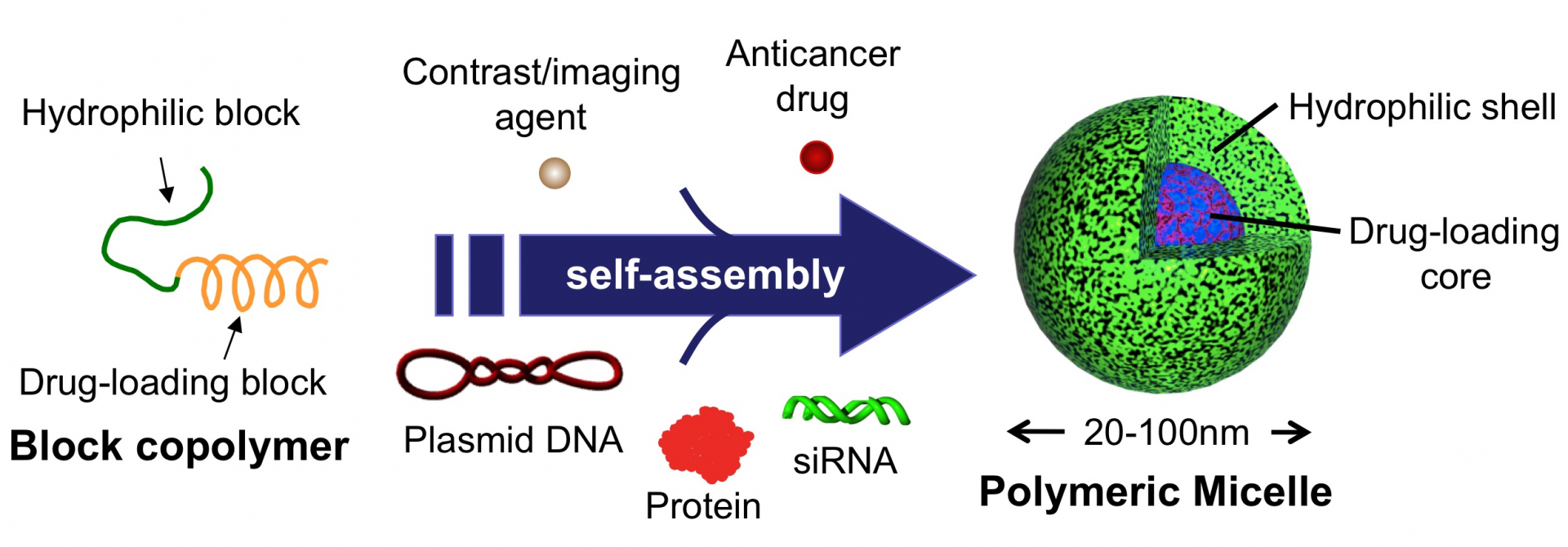"Smart Targeted Therapy by Self-Assembled Supramolecular Nanosystems" Kazunori Kataoka

Date
Location
Description
Speaker:
Professor Kazunori Kataoka
Departments of Materials Engineering and Bioengineering, Graduate School of Engineering,
Division of Clinical Biotechnology Center for Disease Biology and Integrative Medicine, Graduate School of Medicine,
The University of Tokyo
Abstract:
Nanotechnology-based medicine (Nanomedicine) has received progressive interest for the treatment of intractable diseases, such as cancer, as well as for the non-invasive diagnosis through various imaging modalities. Engineered polymeric nanosystems with smart functions play a key role in nanomedicine, including drug carriers, gene vectors, and imaging probes. This presentation focuses present status and future trend of the development of self-assembled nanosystems from block copolymers for the therapy of intractable diseases.

Fig. 1 Polymeric micelles as supramolecular nanomedicines
Nanosystems with 10 to 100 nm in size can be prepared by programmed self-assembly of block copolymers in aqueous entity. Most typical example is polymeric micelles with distinctive core-shell architecture (Fig. 1). Several micellar formulations of antitumor drugs have been intensively studied in preclinical and clinical trials, and their utility has been demonstrated1,2. Compared with conventional formulations, such as liposomes, polymeric micelles have several advantages, including controlled drug release, tissue penetrating ability and reduced toxicity. Critical features of the polymeric micelles as drug carriers, including particle size, stability, and loading capacity and release kinetics of drugs, can be modulated by the structures and physicochemical properties of the constituent block copolymers3. The development of smart polymeric micelles that dynamically change their properties due to sensitivity to chemical or physical stimuli is the most promising trend toward nanomedicines, directing to the targeting therapy with high efficacy and ensured safety. Notable anti-tumor efficacy against intractable cancer, including pancreatic cancer, of antitumor drug-incorporated polymeric micelles with pH-responding property was demonstrated to emphasize a promising utility of nanosystems for the cancer treatment4-6.
References
- Kataoka K., et al. Adv. Drug Deliv. Rev., 2012, 64, 246.
- Cabral, H. and Kataoka, K. J. Contrl. Rel., 2014, 190, 465.
- Mochida, Y., et al. ACS Nano, 2014, 8, 6724.
- Cabral, H., et al. Nature Nanotech., 2011, 6, 815.
- Cabral, H., et al. Proc. Natl. Acad. Sci. USA, 2013, 110, 11397.
- Quader, S., et al. J. Contrl. Rel., 2014, 188, 67.
Website URL
Subscribe to the OIST Calendar: Right-click to download, then open in your calendar application.



